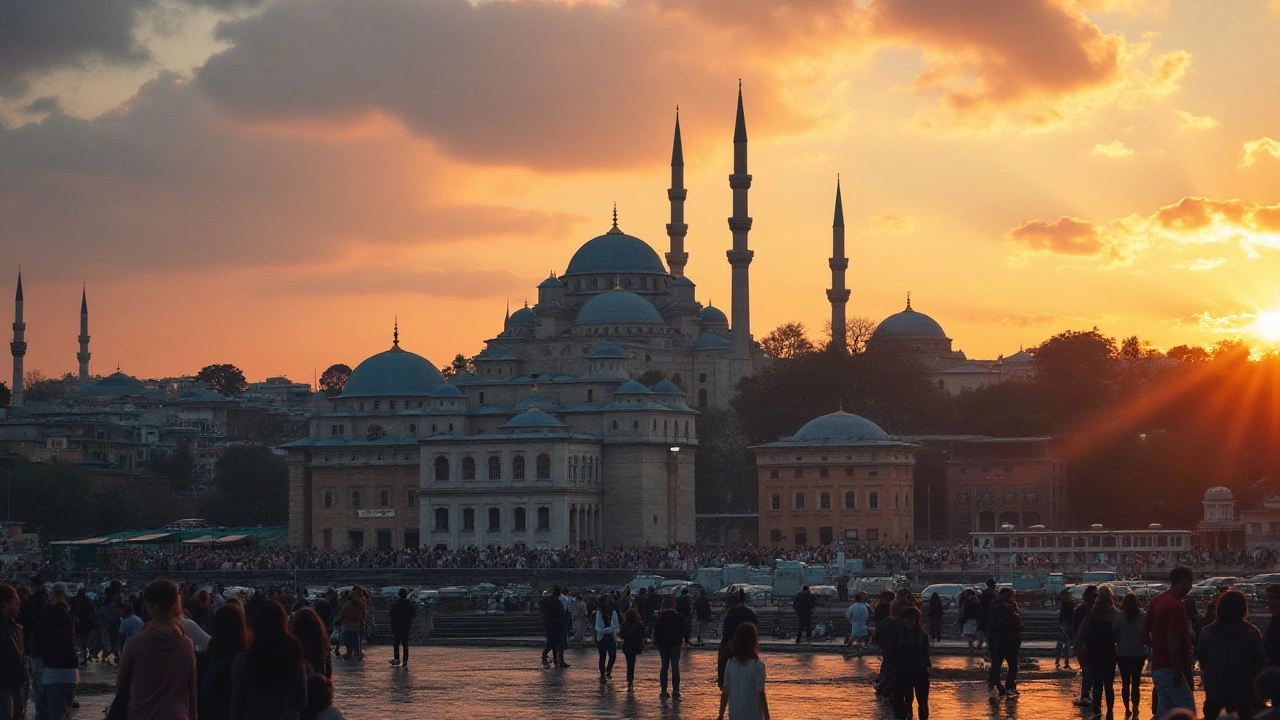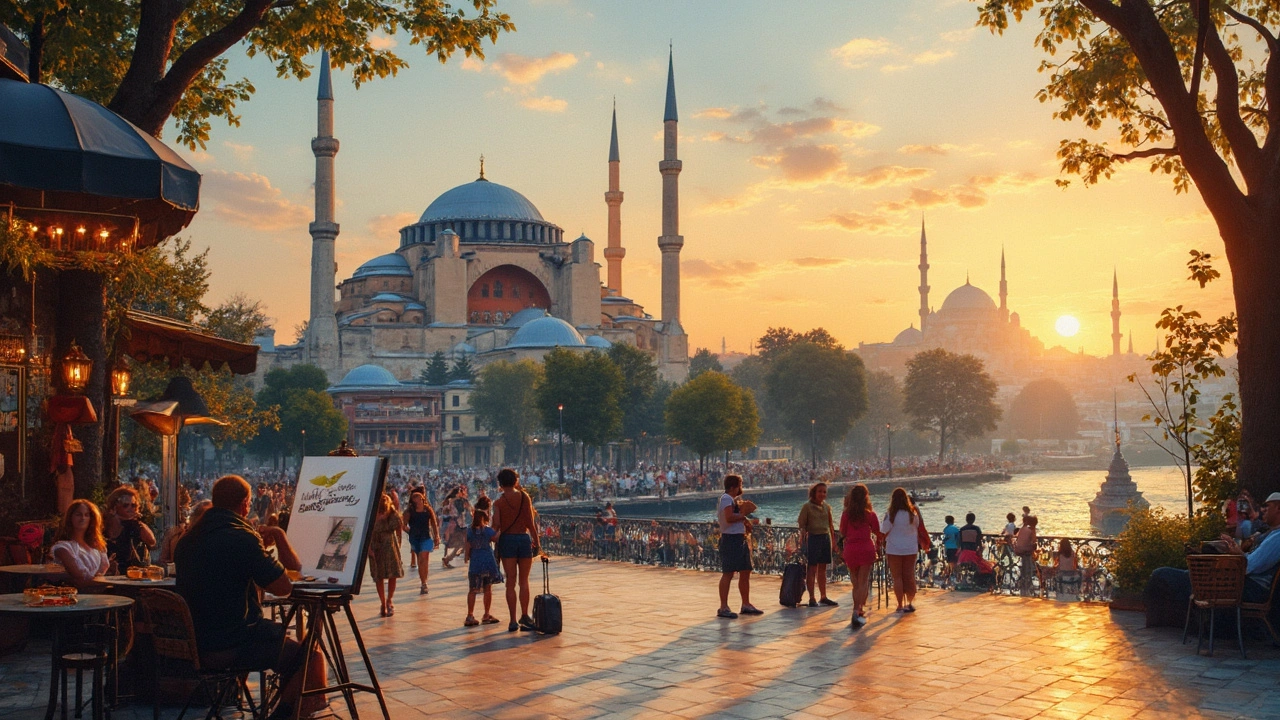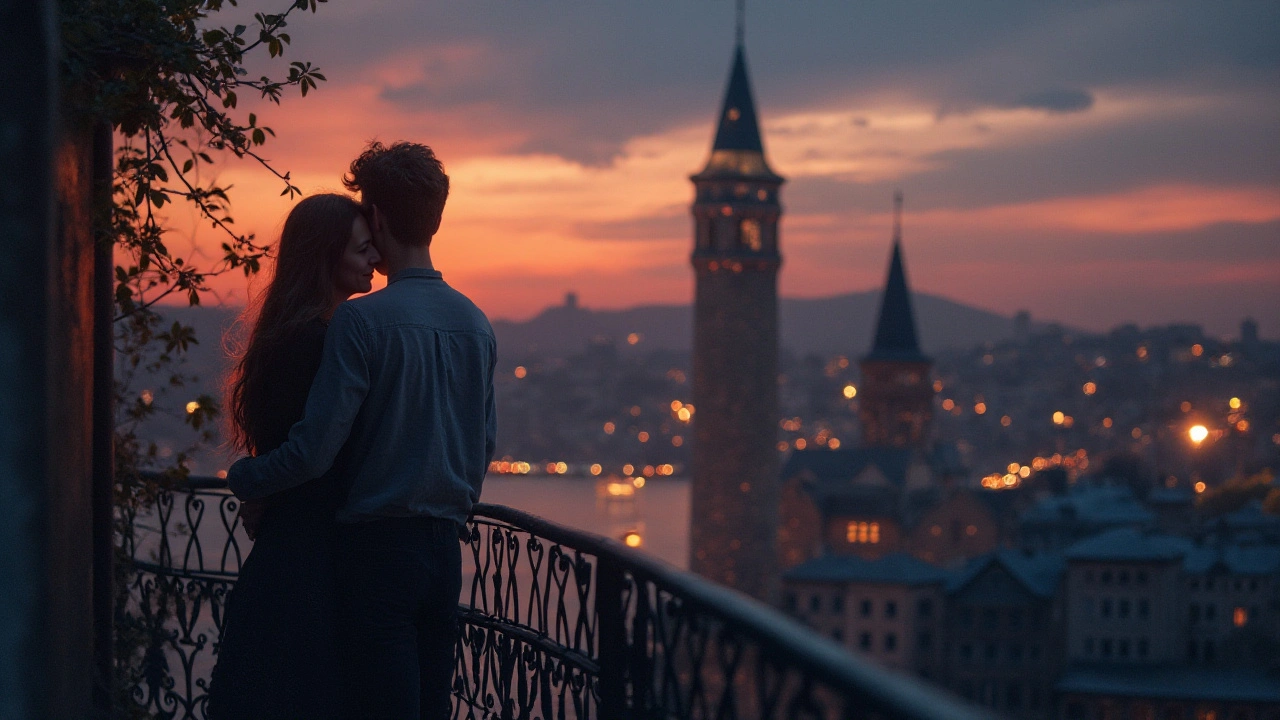Hagia Sophia: A Journey Through Istanbul’s Enchanting Tapestry of History
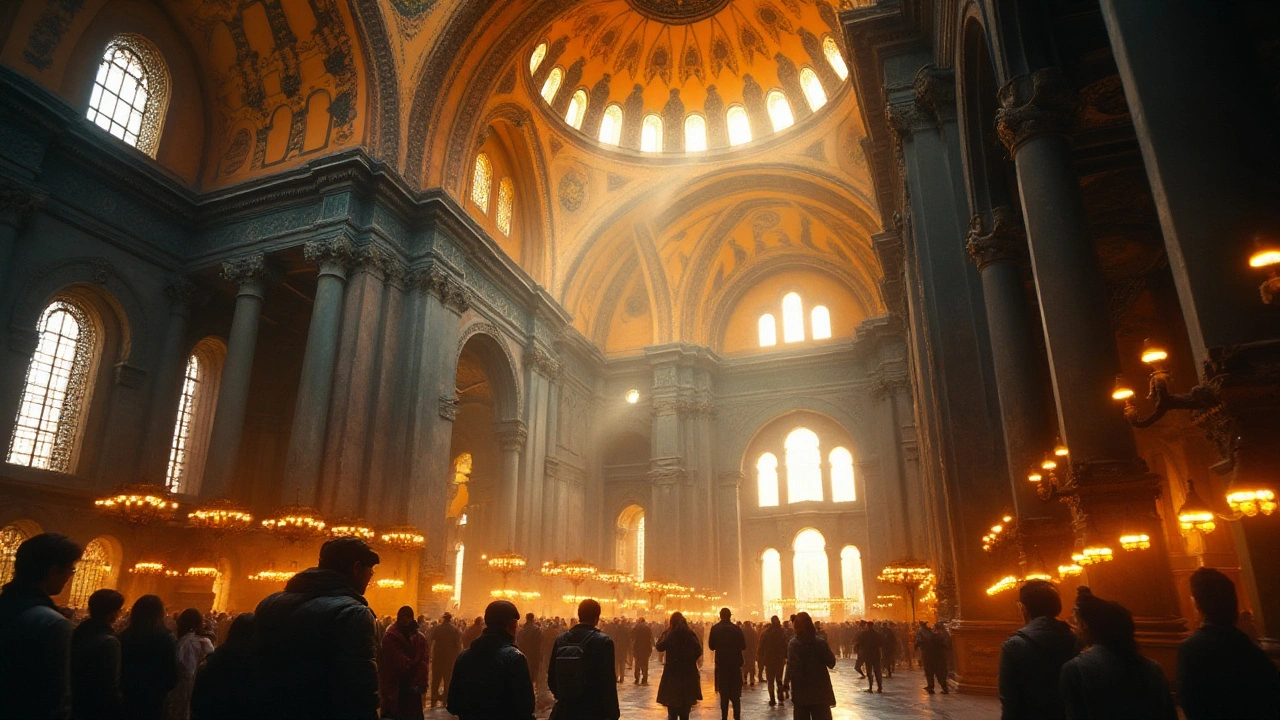
In the heart of Istanbul, where East meets West, stands the enigmatic Hagia Sophia—a structure that has witnessed and survived centuries of history, culture, and change. As an Istanbul resident, walking under its immense domed roof feels like stepping into a different realm, where whispers from the past hover just above the echoes of the present.
Each visit to Hagia Sophia is an unreserved journey through time. Its Byzantine mosaics speak of an era long past, while its minarets sing the praises of Sultans and the call of the mosque. Within its walls, I feel the layers of Istanbul – a city perpetually poised between two worlds, continually remade and reimagined.
- The Byzantine Era: A Cathedral's Majesty
- Ottoman Influence: Transformation to a Mosque
- Modern Shifts: Bridging the Past and Present
- Hagia Sophia Today: Istanbul's Melting Pot of Cultures
The Byzantine Era: A Cathedral's Majesty
The tale of Hagia Sophia's ascent into the heavens begins in 537 AD, when the structure, an architectural marvel of the Byzantine Empire, first opened its doors as a cathedral. Standing in the hushed nave, surrounded by massive marble pillars, one cannot help but imagine the air thick with incense, the dim glow of candles flickering against gold-flecked mosaics depicting sacred Christian scenes created by the hands of artisans with an almost otherworldly skill. It's a building designed to awe, a sentiment reflected in the words of Procopius, the Byzantine historian, who wrote, "the church presents a most glorious spectacle, extraordinary to those who behold it and altogether incredible to those who are told of it." Hagia Sophia embodied the spiritual and political heart of Constantinople, casting a long shadow over the city that would later become known as Istanbul.
Stepping back into the mind of a Byzantine believer, one can only wonder at the cultural synthesis that the cathedral represented—this was not merely a place of worship. No, the Hagia Sophia was the nerve center of the Byzantine world, its nave a gilded box where emperors were crowned and choruses sang snowflake-like hymns that floated to the mosaic-covered ceiling. Istanbul's diverse identity was beginning to take shape through the merging of Roman architectural elements with Eastern opulence. The richly adorned walls bore witness to the shifting sands of an empire in constant dialogue with its own identity—drawing influence from Europe, Asia, and all places in between.
The sheer physical beauty of Hagia Sophia went beyond stone and mortar; it was a marketplace of ideas, each tessera in its mosaics a promise of divine and temporal power. One can imagine the Byzantine elite mingling under its vaults, cloaked in silk and eager to brush against the divine by proximity to these sacred stones. The lower galleries, now filled with whispers and awed gasps, must then have hummed with political machinations and theological debates, each stone arch underlining a taut string of power connecting the emperor, the clergy, and the people.
Today, as I stand beneath its massive dome, feeling the cool breath of history ghost against my skin, I am struck by the sensuality of this place—the way it makes your heart race with reverence and curiosity. It's a voyeuristic pleasure for the soul, to look up and see the marbled grace of centuries past. Here, the sacred and the profane play in the dance of light and shadow, each glimpse through the high windows reminding me that in Istanbul, history is not just recorded, it's experienced, breathed in, and absorbed.
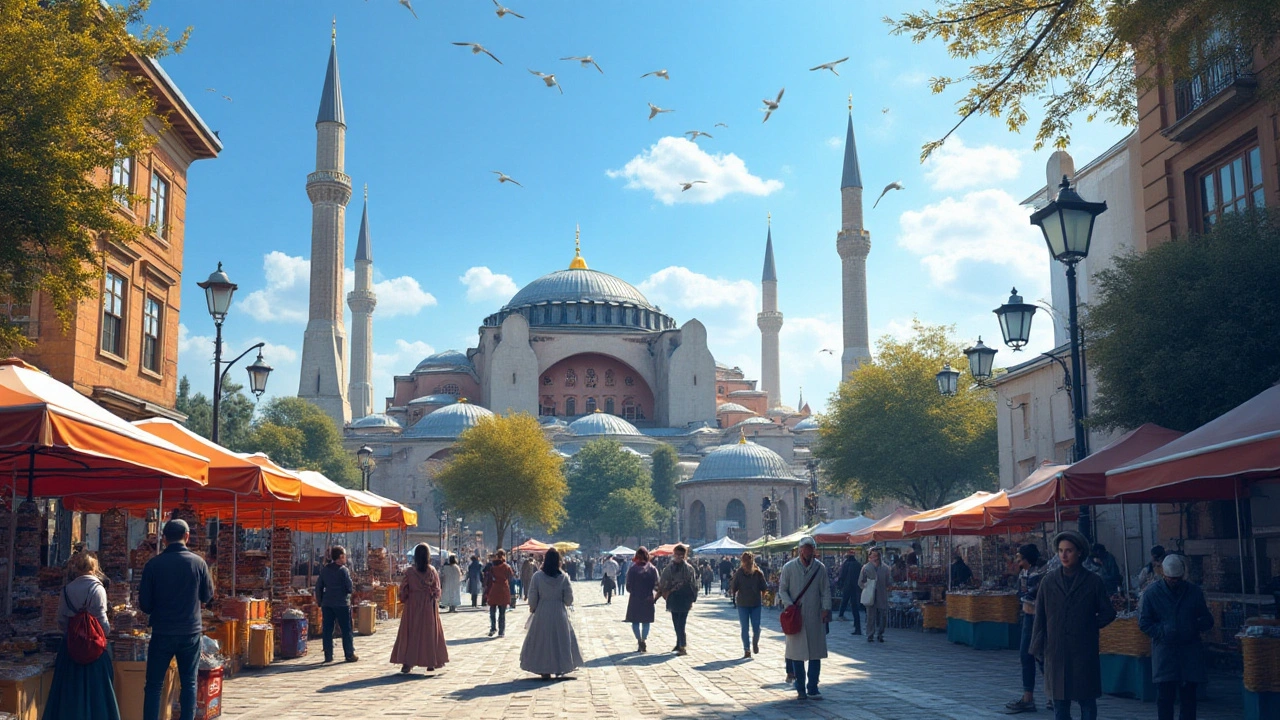
Ottoman Influence: Transformation to a Mosque
The transformation of Hagia Sophia from a Byzantine cathedral into an Ottoman mosque is a tale woven with ambition, reverence, and the intricate artistry of Istanbul's soul. In 1453, when Sultan Mehmed II known as Mehmed the Conqueror breached the great walls of Constantinople, he gazed upon Hagia Sophia not merely as a building but as a symbol of his empire's destiny. Overwhelmed by its grandeur, he knew it had to be the centerpiece for his burgeoning Ottoman Empire, and so began the transformation.
Walking into Hagia Sophia during this era would have been an experience both striking and serene. The Byzantine mosaics that adorned the domes were delicately covered with plaster, not destroyed but tenderly concealed, preserving their spiritual storytelling while the mosque embraced its new identity. Bold Arabic calligraphy, exhuming the glory of the Ottoman script, made its appearance, adding layers of story to this architectural marvel. Istanbul, with its bustling bazaars and vibrant markets, thrummed with the energy of transition, reflecting a city pulsating with cultural synthesis.
Local masons and artisans were in high demand, their skills required to weave this intricate tapestry. The finest minarets soared into the skies, punctuating the Istanbul skyline and announcing the mosque's new calling with the call to prayer echoing through the alleys and over the Bosphorus. The juxtaposition of styles, Byzantine arches alongside Ottoman domes, whispered of Istanbul's identity—ever a city of contrasts. As a fervent Istanbulite, feeling the prayerful vibrations resonate under my feet or hearing the muezzin’s call mingling with the life of Galata is an intimate encounter with the minarets of time.
"The conquest of Constantinople was indeed a pivotal moment in world history, marking the rise of Ottoman dominance," noted historian Halil İnalcık, illuminating the profound impact of this transition.
Beyond its architectural endeavors, there was something deeply sensuous about Hagia Sophia's conversion. It wasn't just about bricks and mortar; it was about the intertwining of hearts and ideals. The Sultans adapted the central nave, installing a mihrab towards Mecca, which transformed the very way people existed in the space. Each stone laid in its new flooring, kissed by the footsteps of generations, each window opening a new chapter to light the sacred texts read within. The waft of incense and the chimes of chandeliers swaying in rhythm with the chants added an almost ethereal quality to prayers, drawing souls into an embrace of spirituality rarely witnessed elsewhere.
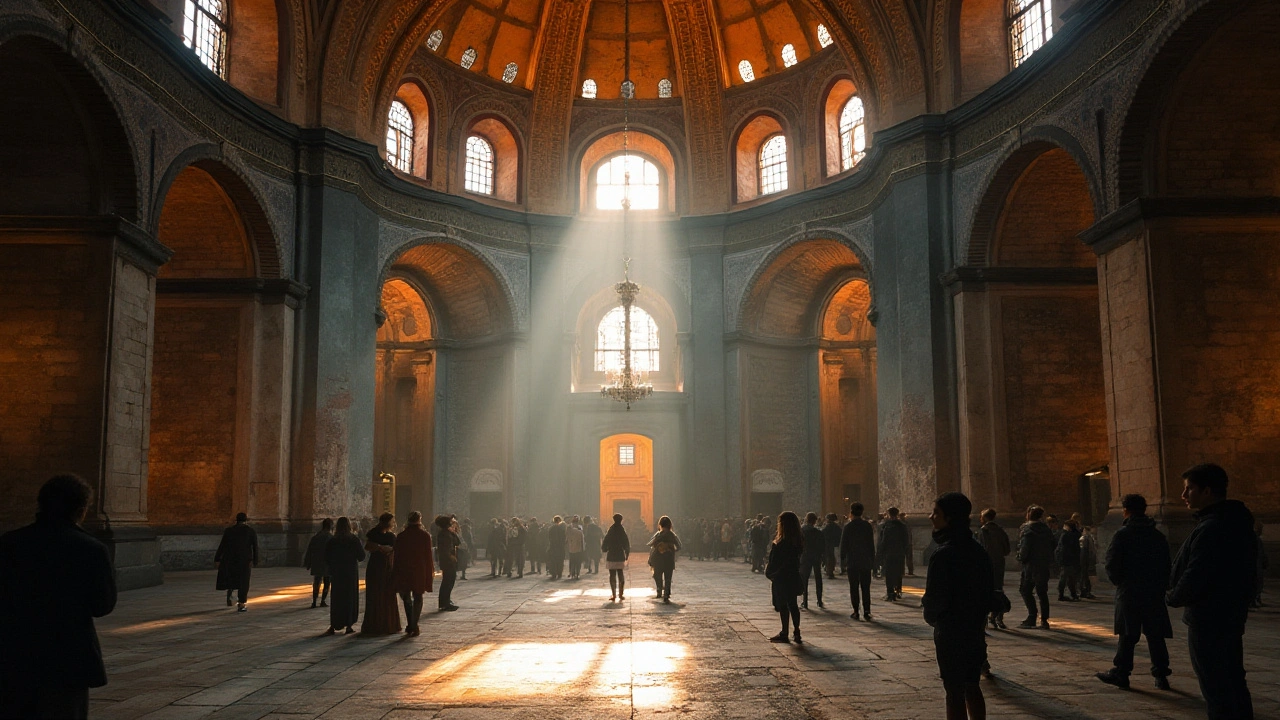
Modern Shifts: Bridging the Past and Present
Stepping into the magnificent Hagia Sophia, one cannot help but feel the interlocking of two worlds—a stunning orchestra of Istanbul's past and its restless present. The journey through its halls is a sensory delight that tells a story of modern shifts bridging a deep-seated past with an energetic present, capturing the essence of Istanbul's rich history as it continues to unfold. As we walk through, each flutter of wind through its vast corridors seems to carry the distinct voices of generations, blending in the harmonious cacophony of cultures that is modern-day Istanbul.
The initial transformation of Hagia Sophia into a museum in 1935 marked a significant cultural shift. This change nudged the city toward a narrative of inclusion, bringing together Christians and Muslims, atheists and believers, all standing together under this emblem of universal heritage. Yet, the decision to reconvert it to a mosque in 2020 sparked debates, stirring a pot of mixed emotions. I remember the atmosphere in Istanbul at the time—a heady mix of unease, intrigue, and reflective acceptance. Was it a return to roots, a political statement, or simply another twist in the tale that is Hagia Sophia?
This reconversion was as much a political move as it was cultural, yet seen through the lens of everyday life in Istanbul, it didn’t come as a surprise. Our city, after all, is used to existing in manifold dimensions. A local baker in Sultanahmet once whispered to me, “Hagia Sophia is like an old soul, she knows how to live in many different skins.” Such personifications thrive here among Istanbulites, nurturing the idea that our beloved city has its own consciousness. The reconversion sparked not just controversy but a renewed dialogue around identity, belonging, and the delicate interplay of secular and religious life interwoven in Turkey.
The Hagia Sophia reminds us that history is never far behind us, and it remains a powerful symbol of the cultural interplay that defines the city today. —An Istanbul-based historian
But let us not forget the tourists who flock to Hagia Sophia, each bringing their own piece of curiosity to the timeless mosaic of stories. I’ve seen countless souls stand transfixed under its vast dome, heads tilted upwards, eyes wide with wonder, entranced by its beauty. As a local, I find myself drawn to the backstories, the hushed tales whispered between the columns that remain hidden in plain sight. It’s about leaning into the hallowed stillness and letting the historical gravity pull me in, tugging at the heartstrings with the irresistible seduction of something both revered and forbidden.
The Ever-flowing Dialogues of Change
Living in Istanbul is an invitation to examine these shifts with an intimate lens, peering into the coexistence of traditions and modernity. For many of us, Hagia Sophia is not just a tourist attraction; it’s a fellow city dweller—complex, layered, significant. Engaging with it is akin to entering a regal dance, where each step is imbued with grace but also laden with meaning. The universal dialogue it fosters transcends politics and personal beliefs, challenging the way we view our history and identity. It’s an eternal lover’s dance, drawing us in with its allure at every glance.
People from all walks of life breathe life into Hagia Sophia, with their experiences echoing its transition. It’s more than a monument; it mirrors Istanbul’s enchanting spell—a city that never dwells in one place but dances between reality and dreams, the old and the new, inviting all who enter to partake in its storied dance. Whether it's participating in a lively debate at a Kadıköy café or soaking in the serenity of the Bosporus, the spirit of Hagia Sophia resonates throughout my life in Istanbul, reminding me of the seamless mosaic of history and present that defines us all.
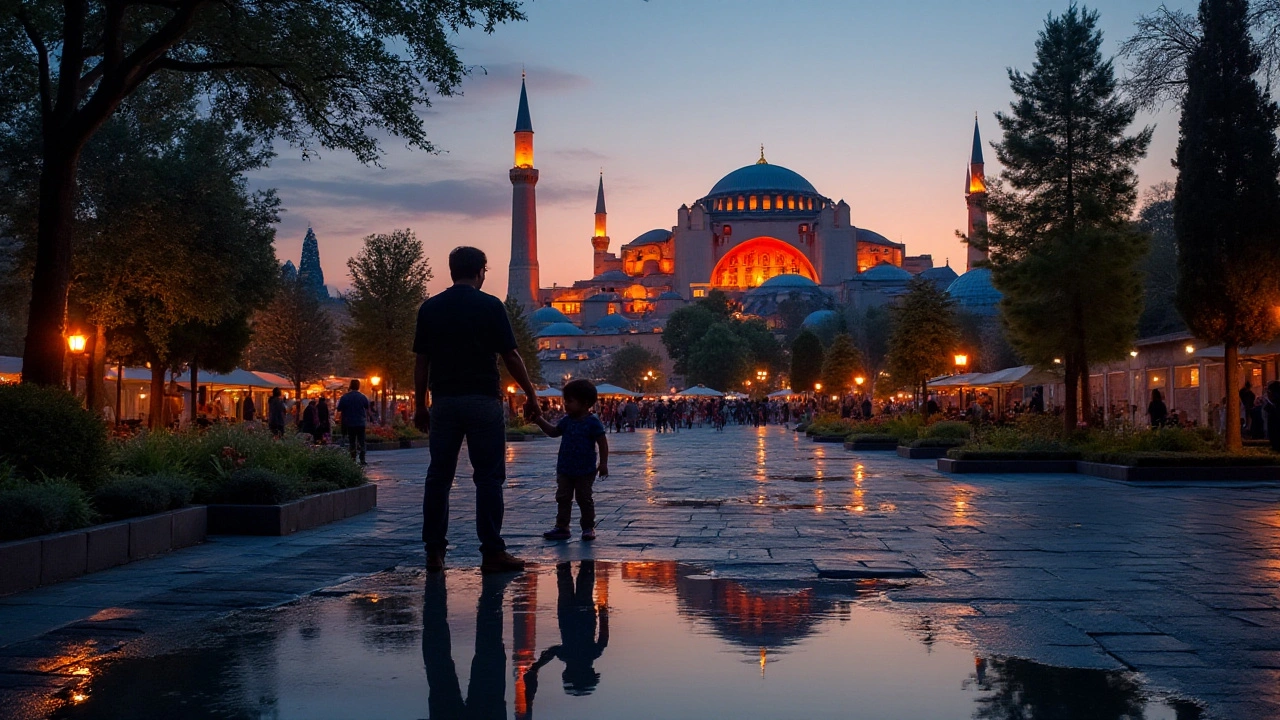
Hagia Sophia Today: Istanbul's Melting Pot of Cultures
Walking through the grand entrance of Hagia Sophia today, I am instantly captivated by its dizzying blend of histories — gazing at its vast domes, breathing in the aroma of ancient stones, and feeling the pulse of Istanbul echoing in every corner. This monumental structure is no longer just a building; it's a living organism thriving in the hustle and bustle of modern Istanbul, and feels like an intimate embrace of cultures stitched together through centuries.
Hagia Sophia stands as an exotic tapestry woven with threads from the Byzantine era, dancing with the fragrant shadows of countless civilizations that once whispered its name. As I walk along its sacred halls, I'm enveloped in the complex flavors of Istanbul's vibrant past. On one side, the gold mosaics shimmer softly like the secrets of a bygone empire, enticing me with their intricate designs and tales of ecclesiastical beauty. They speak of a time when this magnificent space served as the illustrious focal point of Orthodox Christianity.
In contrast, I find myself mesmerized by the towering minarets outside, thrusting towards the sky like passionate declarations of the Ottoman era. These minarets, with their eros of height and grace, call to mind the exquisite transformation that Hagia Sophia underwent when Sultan Mehmed II's dream became a reality. It is this transformation that bestows upon Hagia Sophia its current unique allure—a masterpiece kissed by both Christian and Islamic influences, harmonizing in a shared reverie.
Stepping aside from the larger narrative, I often find small and tender archaeological remains etched into the walls, quiet testimonials searching for an audience. The personal inscriptions of visitors who have left their intimate marks echo between stone and time. These humble traces of human touch remind me that Hagia Sophia belongs not only to the grand tales of empires but to every person, local or visitor, who has ever walked these halls, each adding to Istanbul's vast living inheritance.
It is within these contradictions, this deep fusion of religion and culture, that Hagia Sophia's true magic lies. To some, it may seem almost blasphemous the way spiritual elements cohabit here. But there is an eroticism in dichotomy—an intermingling of divinity and humanity creating a dance of diversity that makes me shiver with awe. As one admirer famously noted, “Hagia Sophia is the dwelling of different gods gathered under one celestial canopy.”
Recent shifts have bestowed upon Hagia Sophia yet another layer of significance. Now a mosque once more, the site carefully navigates its modern identity. Beneath the echoing call to prayer, one can still detect quiet footsteps of tourists, a gentle hum of curiosity that mirrors the ever-evolving palette of Istanbul. These experiences, whether spiritual, historic, or simply human, are what truly make Hagia Sophia a melting pot, a cultural nexus in this timeless city.
